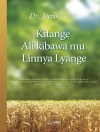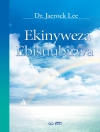While it is all concerned with the story and significance of Jesus Christ, the New Testament is a collection of twenty-seven books, by at least nine different authors, and addressed to individuals or groups in several different locations over a number of years.
The books adopt very different styles, and they often appear, at least on the surface, to be talking about different issues. They are written in the heat of the missionary activity of the early church, in its living, ever-changing context.
This diversity adds richness to our understanding of the Christian faith and its fundamental beliefs – but how might we discover coherence in the teaching of the New Testament without imposing a false synthesis on it, or distorting the emphasis of any individual writer?
In a novel approach, Derek Tidball presents a round-table conversation between the New Testament authors that both reveals how much they have in common and permits them to make their distinctive or even unique contributions. An imaginary ‘chair’ presides over the discussion, and an ‘observer’ enables further commentary on selected topics.
Tidball’s chosen integrating theme is the ‘good news’, ’the gospel about Jesus the Messiah’ (Mark 1:1). He explores why we need the gospel; the person and work of Christ, who is the gospel; the nature of salvation; how we respond to and live out the gospel; and the ultimate fulfilment of the gospel in terms of a new creation.
Inhoudsopgave
Preface 11
1. Introducing the conversation 13
1.1 The agenda 13
1.2 The background 13
1.3 The approach 15
1.4 Alternative approaches 17
a. Authorial approach 17
b. Developmental approach 18
c. Thematic approach 20
d. Systematic approach 21
1.5 Returning to the discussion: who’s who? 22
2. The common thread of the New Testament: the good news 25
3. What is the source of the good news? 31
3.1 The good news originates with God 31
3.2 The nature of God 32
a. God as Creator 32
b. God as Saviour 33
c. Other attributes of God 34
i. Uniqueness 34
ii. Glory 35
iii. Sovereignty and power 35
iv. Holiness and righteousness 36
v. Compassion and mercy 37
d. Another voice: James 38
3.3 Jesus as the revealer of God 38
3.4 One God, two Testaments 39
4. Why is good news needed? 40
4.1 Personal sin 40
4.2 Broken communities 46
4.3 Fractured world 50
5. Who is Jesus, the Messiah? 55
5.1 Jesus: the true human being 56
a. His humanity 56
b. His sinlessness 58
c. Jesus as the last Adam 60
d. Summary 61
5.2 Jesus and the incarnation 62
a. His pre-existence 62
b. The virgin birth 64
5.3 Jesus: his titles 65
a. The Messiah/Christ 66
b. Son of Man 69
c. Son of David 71
d. Son of God 73
e. Lord 78
f. Servant 81
g. Logos: Word and wisdom 83
h. ‘I am’ 84
i. Saviour 86
5.4 Jesus and God 87
a. Jesus as God 87
b. Jesus’ relation to the Father 91
c. Jesus’ relation to the Spirit 92
d. Implicit trinitarianism 94
6. How was Jesus good news? 96
6.1 The kingdom of God 96
a. Background to the kingdom 97
b. The kingdom has arrived 98
c. The kingdom has not yet fully arrived 100
d. Kingdom secrecy 101
e. What happened to the kingdom? 102
f. Kingdom ethics 104
6.2 The life and ministry of Jesus 104
a. His sense of sonship 104
b. His teaching 106
c. His demonstration of the kingdom 109
d. His active obedience 110
e. His fulfilment of Israel’s vocation 112
6.3 The death of Jesus 116
6.4 The resurrection and exaltation of Jesus 122
a. The centrality and significance of the resurrection 122
b. The physicality of the resurrection 127
c. The ascension and exaltation of Jesus 128
7. What does Jesus offer now? The good news today 132
7.1 A new liberty: freedom from the law 132
a. The law is repudiated 133
b. The law is replaced 134
c. The law is re-appropriated 134
7.2 Atonement from sin: various models 137
a. Satisfaction models 137
b. Penal substitutionary models 138
c. Christus Victor models 139
d. Subjective models, such as moral influence models 139
7.3 A new relationship: union with Christ and being ‘in Christ’ 140
7.4 A new standing before God: justification by faith 144
7.5 A new life: concepts of salvation 146
a. . . . From the family: new birth and adoption 148
b. . . . From creation: new creation, regeneration
and illumination 149
c. . . . From history: ransom and redemption 152
d. . . . From the hospital: healing 154
e. . . . From the temple: cleansing and being
brought near 157
f. . . . From the political realm: peace and
reconciliation 159
g. . . . From the market place: redemption and
cancelling debts 162
h. . . . From the legal field: covenant 163
i. Other concepts 165
7.6 A new power: the Holy Spirit 165
a. The character of the Holy Spirit 165
b. The coming of the Holy Spirit 167
c. The modus operandi of the Holy Spirit 170
d. The power of the Holy Spirit 171
i. Power for mission 172
ii. Equipped with gifts 172
iii. At work in the church and the world 174
7.7 A new future: already but not yet 175
a. In relation to holiness 176
b. In relation to our spiritual experience 177
c. In relation to mission 177
d. In relation to ethics 178
e. In relation to spiritual warfare 180
7.8 Conclusion 181
8. How do we make the good news our own? 182
8.1 The gospel requires a response 183
8.2 The essence of the response: repentance, faith and baptism 184
a. Repentance 184
b. Faith 186
c. Baptism 191
8.3 Belonging to the new community 194
a. Introduction 194
b. The church and Israel 199
c. Metaphors of the church 200
d. Practices of the church 201
i. Ordinary practices 201
ii. Special rites: the Lord’s Supper 203
e. The energy of the church 205
f. Leadership in the church 206
g. The mission of the church 209
9. What does it mean to live as a good news people? 213
9.1 The priority of love 214
9.2 Kingdom of God living 217
9.3 The baptized life 218
9.4 ‘In the Lord’: Christian household ethics 220
9.5 The re-appropriated law 223
9.6 The imitation of Christ 224
10. What does the good news say about the future? 226
10.1 The belief in Jesus’ coming again 226
a. How common is the belief? 226
b. How is his return described? 231
c. Did they change their minds about the imminence
of the second coming? 232
d. The manner of his coming 233
10.2 The reasons for his coming 233
a. Judgment will be executed 234
b. Believers will be vindicated 237
c. Salvation will be completed 238
d. Creation will be healed 238
e. Our bodies will be transformed 240
10.3 The signs of his coming 240
a. Reviewing the signs 240
b. The millennium 242
10.4 Death and immortality 244
a. What is death? 245
b. How does the resurrection impact death? 245
c. What happens to a believer at death? 246
d. What did Jesus mean when he said a believer
would never die? 247
e. What is ’the second death’? 247
10.5 Heaven, hell and the new creation 248
a. Heaven and the new creation 248
b. Hell 250
Afterword 255
Bibliography 257
Index of Scripture references 263
Over de auteur
Derek Tidball is Visiting Scholar at Spurgeon’s College, London. Previously he served as Principal of London School of Theology, and as pastor of two Baptist churches. His numerous books include Skilful Shepherds, Ministry by the Book, Signposts and The Message of Leviticus, The Message of Holiness, The Message of the Cross and (with Dianne Tidball) The Message of Women in IVP’s The Bible Speaks Today series.







![Hoes van Brian Schrag & Julisa Rowe: Community Arts for God's Purposes [Chinese] 貼近神心意的社群藝術 Hoes van Brian Schrag & Julisa Rowe: Community Arts for God's Purposes [Chinese] 貼近神心意的社群藝術](https://static.worldofdigitals.com/thumb_webp/740/9781645083740.webp)




